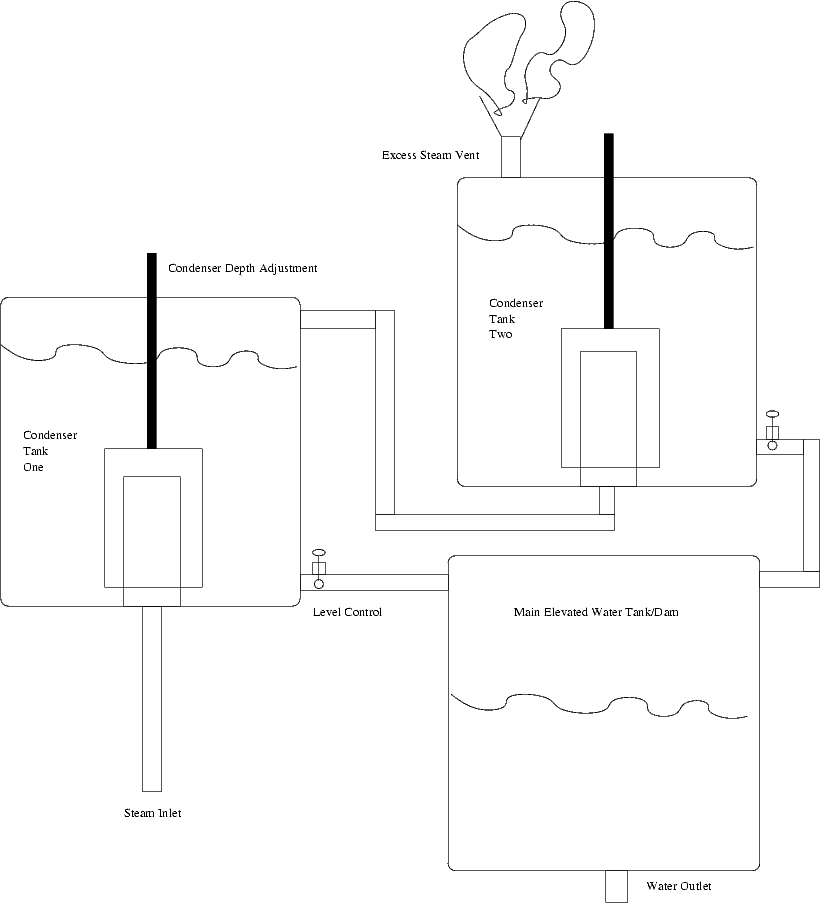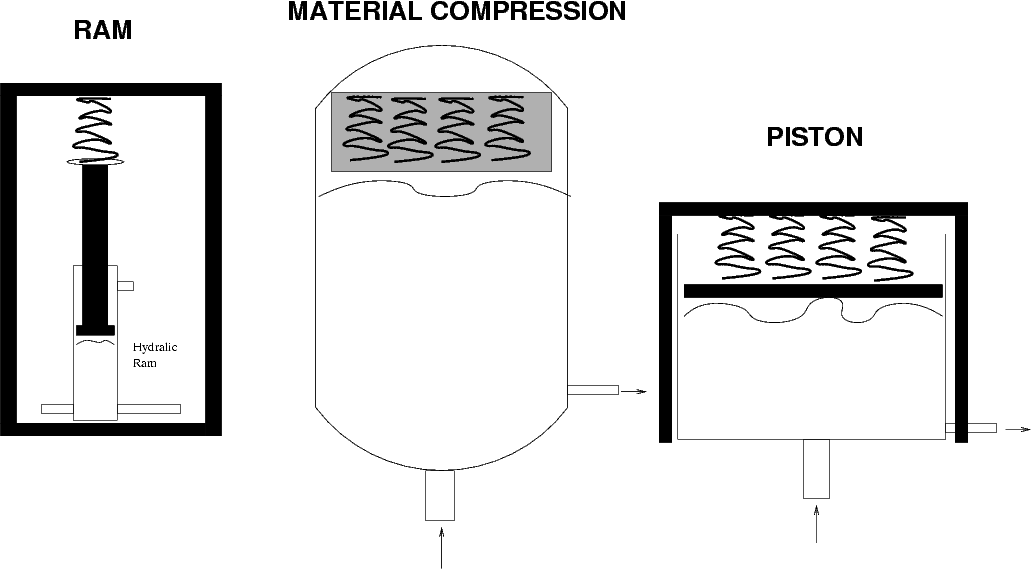This idea has been rattling around in my head for a long time, but in the specific form of connecting a solar trough steam generator to an elevated tank or dam via insulated steam pipes, condensing the steam, and then piping the water back down to a hydroelectric generator driven by the pressure of the water under gravity. The water in the elevated tank or dam therefore amounts to stored energy to power the generator overnight, and excess steam pressure during the day could optionally be used to power another steam turbine generator.
A sequence of condenser tanks was envisioned as depicted in this diagram:

So upon hearing that the HackADay prize featured a suitable category, I decided to finally have a go at realising my solar-hydro dream. I'd long considered using second-hand steel drums (for oil, etc.) cut in half as the trough reflectors, simplifying construction as well as reducing cost. So I got to work with a jigsaw and angle grinder tearing one of the old ones sitting outside my house into two. This all went well enough - it turns out there was even a reflective surface inside, underneath a poorly adhered layer of paint, though not quite reflective enough. However by now I'd got thinking about the other half of my design, the elevated storage, so I went inside and did some research.
After running some sums described at this website I realised some unfortunate truths. Basically the water needs to be well over 100m above the generator for the pressure to be sufficient that a the volume of water required to produce sufficient energy under gravity approaches something reasonable to store. Maybe it would work with a big tank on top of a mountain, or ideally an extinct volcano with a crater lake at the top already, but for powering my house I was looking at an achievable height difference of about 10m at best. That just ain't gonna work.
So I thought that might be the end of my plans there, but by the next day I'd come up with a full assortment of alternative methods using pressurised water tanks, all based around the core idea: "If steam pressure going in is able to push against an elastic constraint on the storage capacity, then even after steam has condensed, the constraint might still be exerting a force on the water stored".
This in fact relates to technologies known as "gravity storage" or "gravity batteries" (Wikipedia), which seem to be getting a fair bit of recent attention for large-scale schemes. One of the companies has published a surprising amount of technical detail on their page describing their scheme where water is pumped into a chamber dug beneath a massive piston carved out of rock in the ground, so as to lift it up hydraulically, the weight then pushing the water out again later when it is required to drive a hydroelectric generator.
That approach sounds like it might require a few more resources than just my pick and shovel, but these similar concepts are hopefully more practical on a small scale:
- Use an old hydraulic ram to lift a weight, with the chamber inside also containing the water (might need many rams in parallel for enough water volume, or just use extremely high water pressure?)
- Custom-build a tank and sealed piston, working like a small-scale version of the commercial gravity-storage concept (difficult engineering)
Springs may be worth considering as an alternative to using a heavy weight. Though compressing a spring will be less efficient than lifting a weight due to losses to material deformation and heat, using a weight presents problems with it potentially accelerating quickly to its end-limits if the load/supply conditions change, and risk of it toppling over. The spring approach also suggests another design:
- Use an existing pressure chamber (LPG tank?), and inside put a dense non-absorbent foam (query maximum temperature) inside which springs (eg. car suspension coil springs) are threaded through. Steam compresses springs/foam which then presses on the water once the steam has condensed.
These concepts are shown, using springs, in the following diagram:

Finally this latter idea can be expanded to simply using the air inside the tank at the beginning as the compressable material. This then becomes a form or Compressed Air Energy Storage (Wikipedia). While this is easiest to build using an existing pressure chamber, it's not clear whether the level of air compression required to store sufficient energy will be maintained after the steam has condensed.

Frankly I don't really know what I'm talking about with this, and like my original elevated storage concept the numbers might not add up for any of these alternative approaches either. So long as I'm still working my way through the details of them one week later though, I figured I might as well publish the project and see how it goes. My immediate intention is to do a lot more research on steam, heat, and pressure vessels. These are naturally a well documented topic from the steam age, and first I think I'll finally make a proper study of my 1942 copy of Steam and Other Engines by John Duncan (the original 1907 edition (my edition shows later revisions) is at the Internet Archive). A quick flip though does much to impress upon me just how little I know about these topics.
Finally, it should be noted that there are existing examples of large-scale solar trough reflector installations being used in combination with energy storage. The Solana Generating Station, completed in Arizona USA in 2013, uses molten salt thermal energy storage (Wikipedia).
Discussions
Become a Hackaday.io Member
Create an account to leave a comment. Already have an account? Log In.